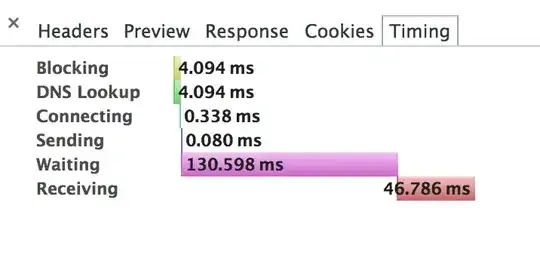I'm trying to understand why a static image being served by IIS is taking ~ 182 ms to load. Using chrome I captured the following timing information.

When I request the same image by opening chrome on the web server directly, I see the "waiting" timing drop to 2-5ms.
I'm trying to make sense of the timing information shown by Chrome. As per Google's documentation, "connecting" timing includes the tcp handshake and "waiting" represents "Time spent waiting for the initial response."
I know for a fact that the web server is not taking more than 2-5 ms to serve the image, so how does my "waiting" number shows ~ 130ms ? Even if it includes the 1 way latency between the server and my browser to transfer the packet, 130ms does not make sense because "connecting" took a total of 0.338ms! These numbers do not add up!